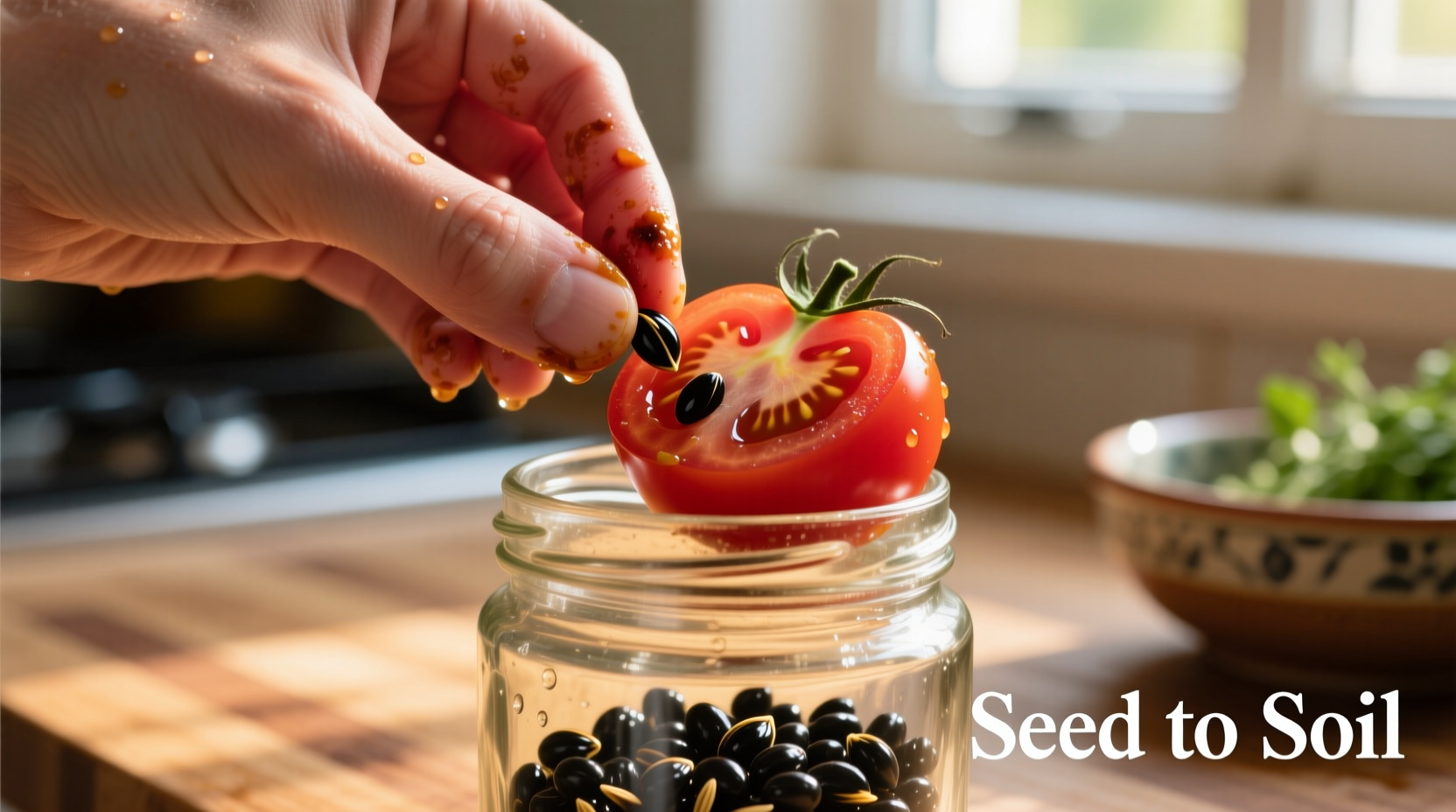Discover exactly how to extract, clean, and preserve tomato seeds with professional techniques that ensure maximum viability for your garden. Whether you're saving heirloom varieties or preparing for next season, this guide delivers the precise fermentation timing, drying methods, and storage conditions that make the difference between successful germination and wasted effort.
Why Proper Tomato Seed Extraction Matters
Tomato seeds contain natural germination inhibitors that prevent sprouting inside the fruit. Simply scooping seeds and planting them leads to poor germination rates. The fermentation process breaks down these inhibitors while eliminating potential diseases. According to research from the University of California Agriculture and Natural Resources, properly processed tomato seeds show 30-40% higher germination rates compared to non-fermented seeds (UC ANR Publication 8348).
When to Harvest Tomato Seeds
Timing affects seed viability significantly. Harvest seeds only from fully ripe, disease-free tomatoes at their peak color. Underripe tomatoes yield immature seeds with poor germination potential. The optimal window occurs when:
- Fruit reaches full variety-specific color (red, yellow, or purple)
- Fruit feels slightly soft when gently squeezed
- Stems detach easily from the vine
- Seeds appear gel-coated and fully developed
Never use seeds from hybrid varieties if you want identical plants next season, as they won't breed true. Focus on open-pollinated or heirloom tomatoes for reliable results.
The Step-by-Step Tomato Seeding Process
1. Seed Extraction
Cut perfectly ripe tomatoes horizontally across the equator. Scoop out seed pulp with a clean spoon into a glass container. Avoid metal containers which can react with the acidic tomato juice. A standard pint-sized mason jar works perfectly for processing 3-5 tomatoes.

2. Fermentation Process
This critical step mimics natural decomposition that breaks down germination inhibitors:
- Add the seed pulp to your container without adding water
- Cover loosely with cheesecloth or paper towel secured with rubber band
- Store at room temperature (68-75°F) away from direct sunlight
- Check daily for mold development and stir gently
Fermentation time varies by temperature and tomato variety. The process completes when:
- A layer of white or gray mold forms on the surface (3-5 days)
- Seeds sink to the bottom of the container
- Liquid develops a sour but not rotten smell
| Temperature Range | Optimal Fermentation Time | Signs of Completion |
|---|---|---|
| 60-65°F (15-18°C) | 4-6 days | Thick mold layer, seeds settled |
| 68-75°F (20-24°C) | 2-4 days | Mold present, distinct sour aroma |
| 76-85°F (24-29°C) | 1-3 days | Rapid mold growth, strong fermentation smell |
Over-fermentation (beyond 7 days) can damage seed viability. The USDA National Institute of Food and Agriculture confirms that proper fermentation reduces seed-borne diseases by up to 90% (USDA NIFA).
3. Seed Cleaning and Rinsing
After fermentation completes:
- Fill the container with lukewarm water (twice the volume of pulp)
- Stir gently to separate viable seeds from debris
- Pour off floating debris and non-viable seeds
- Repeat rinsing until water runs clear
- Collect good seeds that sink to the bottom
Viable tomato seeds will sink while damaged seeds and pulp float. This natural selection process ensures only the healthiest seeds remain.
4. Drying Seeds Properly
Improper drying causes mold and reduced viability. Follow these steps:
- Spread cleaned seeds in a single layer on glass, ceramic, or paper plates
- Avoid paper towels which seeds may stick to permanently
- Place in well-ventilated area away from direct sunlight
- Rotate seeds daily for even drying
- Dry for 1-2 weeks until completely brittle
Seeds are properly dry when they break rather than bend when folded. The Cornell University Cooperative Extension notes that seeds dried below 40% humidity maintain optimal viability for storage (Cornell Extension).
5. Storage for Maximum Viability
Store your seeds correctly to maintain 85%+ germination rates for 3-5 years:
- Place completely dry seeds in labeled paper envelopes
- Include variety name, date, and any special characteristics
- Store envelopes in airtight glass container with desiccant
- Keep container in refrigerator (40°F/4°C) or freezer
- Include silica gel packets to maintain low humidity
Avoid plastic bags which can trap moisture. The Royal Horticultural Society confirms that properly stored tomato seeds maintain 90% germination rates after three years (RHS).
Common Mistakes to Avoid
Even experienced gardeners make these critical errors:
- Skipping fermentation - leads to 40-60% lower germination rates
- Drying on paper towels - seeds become permanently stuck
- Insufficient drying time - causes mold in storage
- Storing in humid conditions - rapidly degrades seed viability
- Using hybrid variety seeds - produces unpredictable results
Testing Your Seed Viability
Before planting season, verify your seeds will grow:
- Place 10 seeds between damp paper towels
- Roll the towels and place in sealed plastic bag
- Store at 70-80°F (21-27°C) for 7-10 days
- Count sprouted seeds to calculate germination rate
A 70%+ germination rate indicates excellent seed quality. Below 50% suggests poor storage conditions or improper processing.
Special Considerations for Different Tomato Varieties
While the basic process remains consistent, some varieties require special attention:
- Cherry tomatoes - smaller seeds need shorter fermentation (1-3 days)
- Beefsteak varieties - larger seeds benefit from extended drying time
- Heirloom types - often have thicker gel coating requiring full fermentation
- Green-when-ripe varieties - judge ripeness by firmness, not color
Understanding these subtle differences between tomato varieties significantly improves your seed saving success. The context boundaries matter most when working with rare heirloom varieties that may have unique germination requirements.











 浙公网安备
33010002000092号
浙公网安备
33010002000092号 浙B2-20120091-4
浙B2-20120091-4